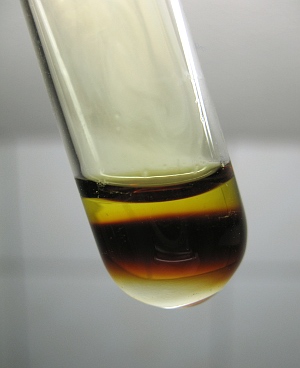
@AJKOER: Why do you think I should repeat the experiment? I have done this many times and I use clean glassware. I certainly do not use dirty test tubes when I find some riddle in my experiments. Especially in such cases I do everything which is possible to rule out effects due to impurities in my reagents. The only impurity I might (and almost certainly) have is chloride ion in my NaClO2, as this usually contains quite some NaCl as impurity. For the rest, I am very confident that I did not introduce any transition metal impurity, nor any colorful organics.



